Gypsy life
21 March 2013 | Extracts, Non-fiction
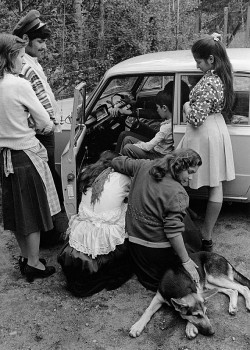
Romani teenagers, Kouvola, 1976. Photo: Mikko Savolainen
Photographer Mikko Savolainen began taking photos of Finnish Romani life in the 1960s, in the time of transition from nomadism to life in housing estates. New trends in the 1960s and 1970s also brought Romani culture to the fore – singers, musicians, festivals; an act baning racial discrimination had been passed. Savolainen became interested in Gypsy life
The text and the photographs are from Suomen romanit. Romanielämää 1960–1970-luvuilla / The Roma of Finland. Roma life in the 1960s and 1970s (Musta Taide, 2008. English translation: Jüri Kokkonen)
I have visited over a hundred Roma homes. Respect for parents, care of the elderly and hospitality are the first things that come to mind.
I have come across similar consideration for visitors only in cottages in Karelia, where the first question was whether I wanted a cup of coffee or to eat first.
I took my first photographs of Roma people in the Market Square of Hamina as an amateur photographer who only wanted to take good portraits.
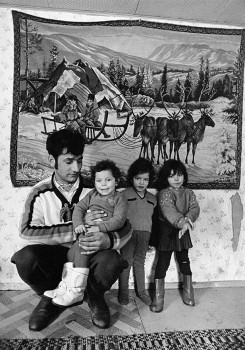
Family life, Kauhava, 1971. Photo: Mikko Savolainen
In the same year I had moved to Helsinki’s Munkkiniemi into a building near a run-down single-family house where derelict alcoholics lived.
When the house had become too dilapidated for them – so I heard – Roma families with children were placed there. I got to know the children and photographed them, and they told about their life, customs and traditions.
It was a beginning to understanding the Roma, but also photography with a specific object in mind.
The pictures in my book do not reflect the whole range of occupations that I came across on my photographic expeditions. While Roma in academic professions did not come out of their closets, there were also smallholders and dairy farmers alongside the traditional occupations.
Some contemporary critics judged my Roma photographs to be too gloomy. They wanted to see campfires and colourful dancing children of nature.
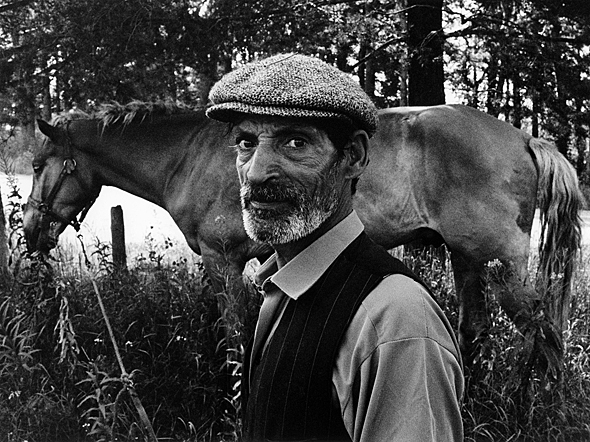
A Romani man, Nurmes, 1969. Photo: Mikko Savolainen
For years I photographed what I saw and experienced. It was far removed from romanticism.
In Helsinki’s Vallila neighbourhood a wealthy Roma man kept warmblood horses in an outbuilding in a yard, with several Roma families living temporarily in the condemned wooden house at the site.
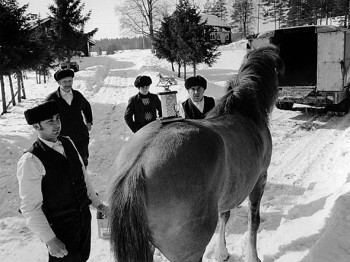
A winner: Romani men with a Finnish horse in Kauhajoki. Photo: Mikko Savolainen, 1971
But the dream of one’s own horse lives on. At Hiekkaharju near Helsinki, Roma were housed in a newly constructed apartment building in 1971. That was something that I, too, had to see.
After having coffee, I photographed a Roma woman’s costume out on the balcony. It contrasted with the sterile surroundings.
The master of the household came to chat. ‘Since this balcony is at first-floor level and if a ramp was built, why not keep a horse here?’
My mind immediately conjured the image of a black horse heating hay on a grey concrete balcony, children hugging the horse, the reactions of the neighbours of the majority population, a police car in the yard. ‘I think you should first ask the building manager’s opinion.’
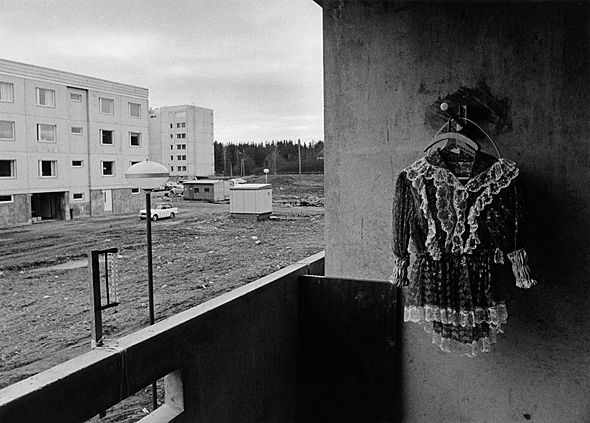
Concrete dreams: a balcony in Tikkurila, 1971. Photo: Mikko Savolainen
Tags: ethnology, photography
No comments for this entry yet
